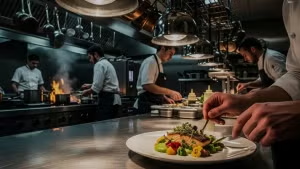The reds, oranges and browns of autumn are a reminder of cold weather months ahead. As the calendar approaches winter, it’s time to prepare for indoor dining as capacity allows.
A recent Civic Science study shows 49% of consumers are comfortable eating out at restaurants, and 36% said they intend to dine in—the highest percentages since the start of the pandemic. This makes it increasingly important for you to have the proper procedures in place to assure safety and the best dining experience possible. Three areas to consider:
1. Take reservations
You may want to move all indoor dining to reservations only. This lets you control the flow of service and social distancing in the dining room as much as possible. It also helps your kitchen plan for service.
Online reservation management systems offer different features and fees. Some can integrate with your POS system, so be sure to find the best fit for your business. Options include:
- OpenTable
- Resy
- Tock
The risk with reservations only is no-shows. Here are two ways to minimize that:
- Confirmation calls. Have the host staff call and confirm the day before for every reservation you have scheduled.
- Booking fees. Online reservation management platforms can take a credit card number during the booking process, and fees can be charged if guests don’t show or fail to cancel ahead of time. Ask about this with each system you consider.
2. Set time limits
Turning tables maximizes profitability, and time limits help. Here’s why it works:
- Comfort. A 2-hour time limit lets guests enjoy a meal in comfort, while you can rest assured your tables turn multiple times a night.
- Economy. You maximize the amount of reservations you’re able to take while controlling the flow for your front- and back-of-house staff.
- Communication. Guests know times are tough for restaurants, and your regulars will understand time limits if you make them aware when they place their reservation and are reminded upon arrival.
3. Manage your waiting area
Keeping this area as open as possible promotes safety and social distancing. Help your staff succeed with these procedures:
- Designate a waiting area. Use signage to indicate a capacity limit and mark spots to sit.
- Control the flow. When taking reservations, communicate an arrival time (a maximum of 5 minutes before expected seating works best).
- Create a check-in policy. Ask guests to call upon arrival, so even if they are early they can sit comfortably in their car, if possible.
- Keep it hospitable. Offer warm coffee, hot chocolate or cider as guests come in from outside.
— Written by Gordon Food Service Business Solutions Specialist Joe Uhl.











